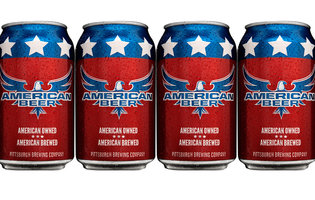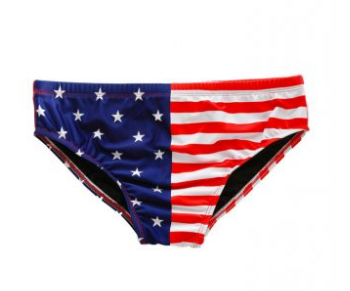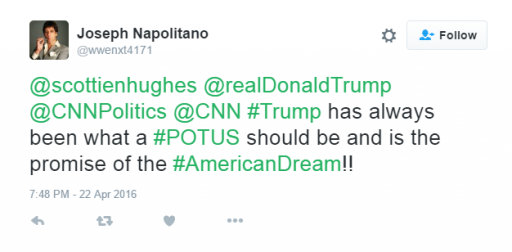Throughout the summer months we always start to see more red, white, and blue. While we usually expect this, mostly because of patriotic holidays like Memorial Day, Fourth of July and this year the Summer Olympics; American-themed branding is at an all-time high, even with summer coming to a close. Major Fortune 500 companies are exploiting this branding tactic in new ways and drawing in more consumers, with some companies even reporting sales increases of over 500% for American-related products. Brands are capitalizing on the patriotic season and consumers’ elevated patriotism by re-branding their standard products into nationalistic commodities that are flying off the shelves.
The Emotional Bid of Branding
Although patriotic branding is extremely prevalent right now, this isn’t the first time we’ve seen companies capitalize on it outside of regular holidays. After the events of September 11th, all kinds of businesses started to incorporate patriotic branding into their marketing strategies. The emotions felt in the wake of the attacks significantly impacted marketing strategies, and consumer buying decisions, as companies seized the opportunity to create emotional, patriotic connections to their brand products that otherwise did not exist.
The more engaged a consumer is with a particular emotional value and the associated brand, the more likely they will trust that emotion and act positively on that belief. This association is especially important in consumer buying decisions. Not surprisingly, behavior psychologists have determined that negative emotions are felt with three times the mental potency of positive emotions and they stay in the psyche for prolonged periods of time.
In the wake of 9/11, Americans everywhere were fueled by negative emotions towards those who attacked the US. However, the negative emotions felt everywhere – anger at the deaths of thousands of innocent people and fears of security and continued terrorist attacks – were also paired with positive feelings of collectivism and nationalistic pride. The combination of these reactions created a unique connection between Americans who were emotionally invested in their country more than ever. As a result, companies recognized this as a unique branding and advertising opportunity and began capitalizing on these patriotic emotions.
Stars, Stripes, and Sales
While it has been fifteen years since the 9/11 attacks, we continue to see companies capitalize on ‘patriotic feelings’ to brand their products, especially during the summer months. As the summer comes to a close, this year was no excepti on.
on.
One example lies in a product that’s more ingrained in US history than anything else – beer. Beer is historically associated with baseball and backyard cookouts, making it about as American as Uncle Sam. One celebrated “American” brewery, Anheuser-Busch is no stranger to wrapping their beer cans in stars and stripes. In the past, they’ve themed their flagship beer, Budweiser, with iconic American symbols like the U.S. flag and The Statue of Liberty during the summer months.
While Budweiser is brewed in the United States (you can’t miss the announcement after every commercial that they’re “brewed in St. Louis, Missouri”) the profits go abroad, as the company is Belgian owned. This year, the beer has ironically re-named itself “America”—eight years after selling themselves to the European brewer, InBev. Past success, including a 40% increase in sales during the 4th of July holiday, predicts that most consumers are going to jump at the idea of showing (or drinking) their patriotism with nothing other than a foreign-owned product — wrapped in red, white and blue.
Anheuser-Busch isn’t the only company capitalizing on American’s patriotism; many other major companies such as Coca-Cola and M&M are also joining the trend. The Hershey Company, America’s confectionery and snack giant, represents this trend better than anyone. Their iconic chocolate bar packaging hasn’t changed in 122 years, but this year sported red, white, and blue inside the ‘HERSHEY’ letters. The public perceives Hershey as one of America’s most iconic brands, and the company utilized this perceptual momentum by becoming an official sponsor of the USOC (United State Olympic Committee). Hershey spent millions of dollars during the patriotic season alone to rebrand this successful product based upon knowing that the pride, nationalism (and likely binge eating) generated from the Olympics would drives sales.
N ot only have some companies completely wrapped their products in the star spangled banner, but patriotic companies in general are reporting surprising spikes in sales. Shinesty, an online retailer of patriotic themed clothes, is reporting a 500% increase in sales this year. Chubbies, a start-up shorts company that markets mainly to college boys with an obsession for patriotism, drinking, and matching outfits (read: frat boys), can’t keep their bathing suit named “Merica” in stock. They are also now featuring a red, white and blue suit for guys that can be ripped off to reveal a Speedo-like swimsuit – with a bald eagle across the back. Flag sales, which usually only rise 1-2% during an election year, are rising to as much as 15% for some retailers.
ot only have some companies completely wrapped their products in the star spangled banner, but patriotic companies in general are reporting surprising spikes in sales. Shinesty, an online retailer of patriotic themed clothes, is reporting a 500% increase in sales this year. Chubbies, a start-up shorts company that markets mainly to college boys with an obsession for patriotism, drinking, and matching outfits (read: frat boys), can’t keep their bathing suit named “Merica” in stock. They are also now featuring a red, white and blue suit for guys that can be ripped off to reveal a Speedo-like swimsuit – with a bald eagle across the back. Flag sales, which usually only rise 1-2% during an election year, are rising to as much as 15% for some retailers.
Why are sales for patriotic themed products increasing so much this season? For many products, the answer may lie in this year’s presidential election.
The Rise of The American Dream
If you’ve been following the election at all or scrolled through Facebook for half of a second, then you’re familiar with Republican nominee Donald Trump and his campaign slogan. His catchphrase, “Make America Great Again”, has been the cornerstone of Trump’s ascent to the Republican nomination and resonated with Americans everywhere. The trademarked slogan embellishes an apparel line, featuring hats, shirts, and buttons, which isn’t surprising considering Trump’s history of turning everything he does into a money making venture – even his bid for the White House.
But what does Trump’s slogan mean? And what does it have to do with branding tactics? For many Americans, the slogan represents what America should be, and the return to what it once was. Nothing says this better than the quintessential ‘American Dream’ – the idea that every US citizen should have an equal opportunity to achieve success through hard work, determination, and initiative.
Man y often say that entrepreneurialism is the spirit of America, and what allows this to be attainable to all Americans is good ol’ capitalism. To many people, Trump embodies the American Dream and illustrates the success of capitalism for personal gain. His entire family legacy bases itself upon entrepreneurial success, with Trump being the third magnate in the family to amass a multi-million dollar fortune using capitalist savvy.
y often say that entrepreneurialism is the spirit of America, and what allows this to be attainable to all Americans is good ol’ capitalism. To many people, Trump embodies the American Dream and illustrates the success of capitalism for personal gain. His entire family legacy bases itself upon entrepreneurial success, with Trump being the third magnate in the family to amass a multi-million dollar fortune using capitalist savvy.
People everywhere know Donald Trump as one of the wealthiest men in America, and this is in large part due to Trump’s decades of personal branding.
People associate the Trump empire with prosperity and success, not necessarily because Trump is himself a brilliant business person (in fact – he’s quite famous for not only his success, but his failures) but rather his brand is “famous for being rich”, which in turn makes him richer. With a small loan of a million dollars, he built an empire around himself and even valued his own name at 3.3 billion dollars.
Trump’s prominent brand identity causes people to associate The American Dream with Trump since he is evidence of capitalisms’ voyeuristic benefits. Paired with his slogan, Trump is just one big promise saying, “You too can be like me – if you vote Trump for president 2016!”
As Trump continues to promise and promote the return of the American Dream, feelings of nationalism will continue to rise throughout the country. People not only want to show their support for their candidate but also for their country, which in Trump’s case translates to the same thing: a vote for Trump is a vote for The American Dream.
Although Trump is not the direct cause of patriotic branding increases – he is capitalizing on it. Through his campaign, and specifically his slogan, he evokes prideful and patriotic emotions across the country which is allowing brands to draw on these emotions and create connections to otherwise unrelated products.
We regularly see these branding tactics a few months out of the year, and they don’t usually make a lasting impression for the company, but this patriotic season may be different. Stay tuned throughout the rest of the election season – we’re betting the trend is just getting started.
